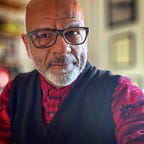Phipps Model Tenements and the Old San Juan Hill Community
Decades before the nearby Lincoln Center complex opened in the 1960s, the six-story Phipps Model Tenements, at 237–239 West 63rd Street, composed a towering showpiece in the surrounding poor, but thriving, African American tenement neighborhood.
A century ago the Upper West Side’s Lincoln Square district, around Broadway in the West 60s, was colloquially named San Juan Hill. The name’s suggested origin was that many Black veterans of the Spanish-American War — who had shown valor under Colonel Teddy Roosevelt at the Battle of San Juan Hill — later settled in the area.
This Black community’s main street was Amsterdam Avenue. “Nearly everything was called Amsterdam — Amsterdam Bakery, Amsterdam Laundry and Amsterdam everything else,” one newspaper noted. Indeed, that same paper, one of the country’s oldest African American newspapers, had done likewise: In 1909 journalist James H. Anderson had only a lead pencil, six sheets of blank paper, a dressmaker’s table, some cellar space on 65th Street and a locally inspired name when he put out the first issue of the New York Amsterdam News.
But San Juan Hill’s vibrancy extended even blocks away. At Broadway and 65th Street the firm of New York’s first black architects Vertner Tandy and George Foster stood at the site of today’s David Geffen Hall at Lincoln Center. And farther still, near Central Park, the New York African Society for Mutual Relief — the first African American association to incorporate in 1810 — owned a five-story building at 43 West Sixty-Sixth Street that is now supplanted by ABC-TV Studios.
However, the Phipps Houses stood apart. Built in 1907, the steam-heated, fireproof and roof-gardened buildings were the philanthropic gift of steel magnate Henry Phipps, expressly for Black families. Their sole white tenant was prominent social worker Mary White Ovington, a later NAACP co-founder, who moved in in 1908 to spearhead on-site “settlement house” work including a kindergarten, recreational activities and an employment agency.
Nevertheless, in those very early years, San Juan Hill was literally on shaky ground. It sat in the construction path of the new Pennsylvania Railroad Station and of streets being dug out to lay trackbeds. Numerous church and community meetings railed against the constant disruptions from this immense transit infrastructure project, which induced many to move farther uptown to Harlem.
Yet, not every family in San Juan Hill pulled up stakes. Perhaps the lyrics of a popular song, that was born just down this very street in 1921, romantically evokes some of the neighborhood’s resilience:
Don’t start minding and fault-finding, No matter how dark one’s path may grow — Love will find a way.
Indeed, San Juan Hill was possessed of a palpable community spirit. Its enduring cohesion was underpinned by local social services, institutions, businesses and interrelated family bonds.
By 1922 the looming Phipps Houses still had pride of place in the Black community when the Monk family moved in, not knowing their little boy, named Thelonius, was destined to become the legendary jazz pianist for whom this street is now co-named.
______________________________________
This story appeared in different form in the 2021 On Site Opera (@onsiteopera) production, The Road We Came, filmed by Ryan McKinny and Tonya McKinny (@helioartsmedia), featuring baritone Kenneth Overton (@kennytheeoverton) and narrator Eric K. Washington (@erickwashington).
